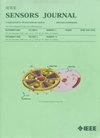Optimal Imaging Band Selection for Laser-Vision System Based on Welding Arc Spectrum Analysis
IF 4.3
2区 综合性期刊
Q1 ENGINEERING, ELECTRICAL & ELECTRONIC
引用次数: 0
Abstract
The laser-vision system (LVS) is considered the most promising sensing method for robotic welding. Due to the harsh visual noise during the welding process, achieving accurate real-time detection of weld seams is still difficult. Since the optical propagation of the laser is affected by the welding environment, the commonly used visual noise filtering methods designed for the passive vision system (PVS) are no longer applicable. This article exploits the selection of the optimal imaging band for the LVS to eliminate the welding arc noise. The arc spectral distribution under various welding conditions is first measured, and five spectral bands with lower arc intensity are subsequently identified as candidates for the following investigations. Based on extensive investigations, we select the optimal imaging band for the LVS with the optimal visual clarity. Experiments have shown that LVSs working at this bandwidth can significantly reduce the interference of welding noise and improve imaging quality. Experiments show that the LVS working in this optimal bandwidth can effectively avoid the interference of welding noise, thereby achieving clearer visual imaging effects. To demonstrate the superiority of our findings for LVSs, we compare our method with a variety of well-known commercial products. This work reveals the arc spectral distribution under different welding conditions and provides effective guidance in enhancing sensing performance for LVSs.基于焊接电弧光谱分析的激光视觉系统最佳成像波段选择
激光视觉系统(LVS)被认为是最有前途的机器人焊接传感方法。由于焊接过程中存在严重的视觉噪声,实现焊缝的精确实时检测仍然是困难的。由于激光的光传播受到焊接环境的影响,通常用于被动视觉系统(PVS)的视觉噪声滤波方法不再适用。本文探讨了如何选择LVS的最佳成像波段来消除焊接电弧噪声。首先测量了不同焊接条件下的电弧光谱分布,然后确定了五个较低电弧强度的光谱波段作为后续研究的候选波段。在广泛研究的基础上,我们选择了具有最佳视觉清晰度的LVS的最佳成像波段。实验表明,工作在该带宽下的llv可以显著降低焊接噪声的干扰,提高成像质量。实验表明,工作在该最优带宽下的LVS可以有效避免焊接噪声的干扰,从而获得更清晰的视觉成像效果。为了证明我们的发现对于LVSs的优越性,我们将我们的方法与各种知名的商业产品进行了比较。该研究揭示了不同焊接条件下的电弧光谱分布,为提高LVSs的传感性能提供了有效的指导。
本文章由计算机程序翻译,如有差异,请以英文原文为准。
求助全文
约1分钟内获得全文
求助全文
来源期刊

IEEE Sensors Journal
工程技术-工程:电子与电气
CiteScore
7.70
自引率
14.00%
发文量
2058
审稿时长
5.2 months
期刊介绍:
The fields of interest of the IEEE Sensors Journal are the theory, design , fabrication, manufacturing and applications of devices for sensing and transducing physical, chemical and biological phenomena, with emphasis on the electronics and physics aspect of sensors and integrated sensors-actuators. IEEE Sensors Journal deals with the following:
-Sensor Phenomenology, Modelling, and Evaluation
-Sensor Materials, Processing, and Fabrication
-Chemical and Gas Sensors
-Microfluidics and Biosensors
-Optical Sensors
-Physical Sensors: Temperature, Mechanical, Magnetic, and others
-Acoustic and Ultrasonic Sensors
-Sensor Packaging
-Sensor Networks
-Sensor Applications
-Sensor Systems: Signals, Processing, and Interfaces
-Actuators and Sensor Power Systems
-Sensor Signal Processing for high precision and stability (amplification, filtering, linearization, modulation/demodulation) and under harsh conditions (EMC, radiation, humidity, temperature); energy consumption/harvesting
-Sensor Data Processing (soft computing with sensor data, e.g., pattern recognition, machine learning, evolutionary computation; sensor data fusion, processing of wave e.g., electromagnetic and acoustic; and non-wave, e.g., chemical, gravity, particle, thermal, radiative and non-radiative sensor data, detection, estimation and classification based on sensor data)
-Sensors in Industrial Practice
 求助内容:
求助内容: 应助结果提醒方式:
应助结果提醒方式:


